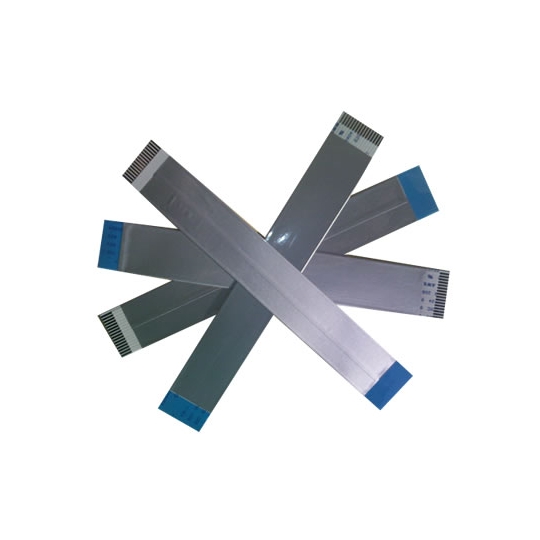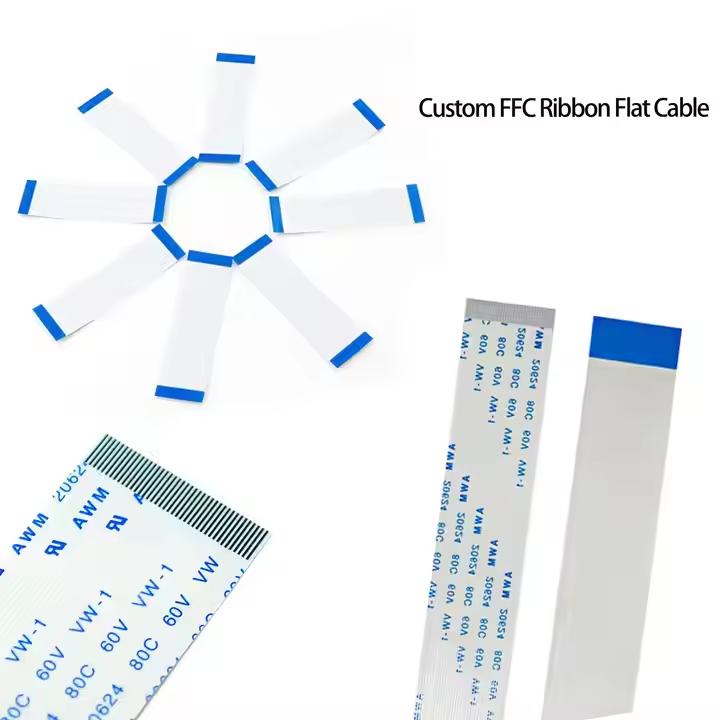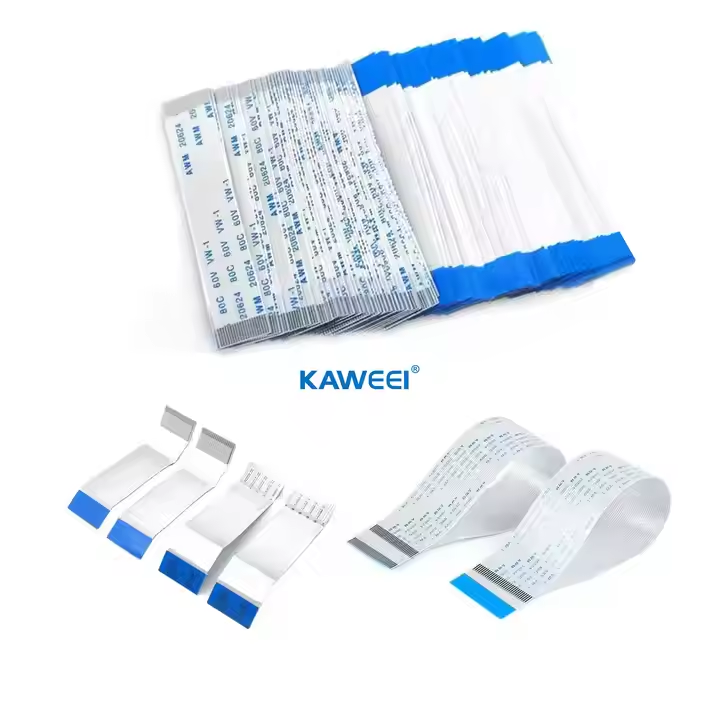Comprehensive Classification and Application Guide of FFC Flat Cables
| Classification Dimension | Specific Categories | Characteristics | Common Application Scenarios |
| Number of Conductors | 4 - 6 conductors | Transmits basic control signals, with limited data transmission capacity | Simple consumer electronics such as small remote controls |
| Number of Conductors | 30 - 50 conductors and above | Meets the need for large-amount data transmission, with strong data transmission capacity | Complex electronic devices like connecting the display screen and motherboard in laptops |
| Wire Width and Pitch | Wire width 0.2mm - 1.0mm, pitch 0.25mm - 1.27mm, larger wire width and pitch | Can carry a large current and has strong anti-interference ability | Power connection cables in industrial control equipment |
| Wire Width and Pitch | Wire width 0.2mm - 1.0mm, pitch 0.25mm - 1.27mm, smaller wire width and pitch | Saves space and is suitable for refined circuit layout | Electronic products that pursue thinness, lightness, and high-density integration, such as smartphones and tablets |
| Insulating Material | Polyvinyl Chloride (PVC) | Low cost, with certain insulation and flexibility | Ordinary consumer electronics |
| Insulating Material | Polyimide (PI) | High-temperature resistant, with good chemical stability and mechanical properties | Fields with high environmental requirements such as automotive electronics and aerospace |
| Number of Cable Layers | Single - layer | Simple structure, low cost | Devices with low requirements for circuit complexity and loose space layout, such as electronic toys |
| Number of Cable Layers | Double - layer | Adds another layer of conductors based on a single - layer, with more abundant functions | Small electronic devices with certain requirements for signal transmission, such as MP3 players |
| Number of Cable Layers | Multi-layer | High integration, can achieve a large number of circuit connections | Complex high-end electronic products such as high-performance laptops and high-end smartphones |
Classification by the Number of Conductors
The number of conductors is a fundamental and crucial classification dimension for FFC flat cables. The conductors in the cable are responsible for transmitting electrical signals, and the number of conductors determines the data transmission capacity and functional characteristics of the cable. The number of conductors in common FFC flat cables can range from just a few to over a hundred. In some simple consumer electronic devices, such as small remote controls, FFC flat cables with only 4 - 6 conductors may be used to transmit basic control signals. However, in complex laptop computers, the FFC flat cables connecting the display screen and the motherboard may have 30 - 50 conductors or even more to meet the requirements for transmitting a large amount of data like high-definition images and audio.
Classification by Wire Width and Pitch
Wire width refers to the width of each conductor in the flat cable, and pitch is the distance between two adjacent conductors. These two parameters have a significant impact on the performance and application scenarios of the cable. Usually, there are various combinations of wire width and pitch specifications. The common wire width ranges from 0.2mm to 1.0mm, and the pitch ranges from 0.25mm to 1.27mm. A wider wire width and larger pitch can carry a larger current and have a relatively stronger anti-interference ability. They are often used for power connection cables in industrial control equipment that have higher power requirements. On the contrary, in electronic products that pursue thinness, lightness, and high-density integration, such as smartphones and tablets, FFC flat cables with smaller wire widths and pitches are adopted to save space and achieve a more refined circuit layout.

Classification by Insulating Material
The insulating material plays a key role in isolating conductors, preventing short circuits, and protecting the internal circuits in FFC flat cables. According to different insulating materials, FFC flat cables can be divided into several types. The most common one is the polyvinyl chloride (PVC) insulated flat cable. It has a relatively low cost and certain insulating properties and flexibility and is widely used in ordinary consumer electronic products. However, in some special environments with higher requirements for high-temperature resistance and chemical stability, such as automotive electronics and aerospace fields, FFC flat cables insulated with polyimide (PI) are selected. The PI material has excellent high-temperature resistance and can maintain stable performance in high-temperature environments. It also has good chemical corrosion resistance and mechanical properties.

Classification by the Number of Cable Layers
The number of layers is also an important classification basis for FFC flat cables. They can be divided into single-layer, double-layer, and multi-layer cables. Single-layer cables have a simple structure and low cost and are suitable for some electronic devices that do not have high requirements for circuit complexity and have relatively loose space layouts, such as simple electronic toys. Double-layer cables add another layer of conductors based on the single layer. Through reasonable wiring design, they can achieve more abundant circuit functions and are often used in small electronic devices with certain requirements for signal transmission, such as MP3 players. Multi-layer cables have a high level of integration and can realize a large number of circuit connections within a limited space. They are often used in high-end electronic products, such as high-performance laptops and high-end smartphones, to meet the complex circuit design and high-speed data transmission requirements of these products.
The classification methods of FFC flat cable specifications are diverse, covering multiple key dimensions such as the number of conductors, wire width and pitch, insulating material, and the number of cable-layers. In practical applications, factors such as the functional requirements of electronic devices, the usage environment, space limitations, and cost budgets need to be comprehensively considered to accurately select FFC flat cables with appropriate specifications to ensure the stable operation and performance optimization of electronic devices.
Recent Posts
2025-05-08 11:52:53
Terminal Crimping Process Optimization for Enhanced Electrical Performance
2025-05-04 15:34:51
IP69K pressure value test
2025-04-28 14:41:08



